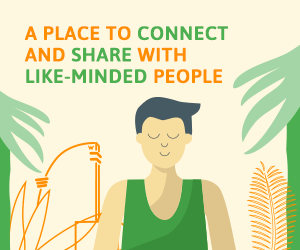Find trouble getting motivated or sticking to your goals? By using the SMART technique, you can focus harder says Dee Marques. And if you combine it with neuro-linguistic programming, all the better.
Goal setting and achieving goals is an integral part of personal development and self-growth. But have you ever wondered why some people seem to accomplish virtually everything they set out to do, while others struggle? Some research studies have found that only eight percent of goal setters succeed, so is there any secret to being part of that eight percent?
While there's no magic recipe to ensure you achieve your goals easily, being systematic and aligning all your resources are some of the most important things you can do. Read on to learn how to optimize the goal setting process using SMART criteria and NLP techniques side by side.
The basics of SMART goals
The idea behind SMART goal setting was first developed in the 1980s and was inspired by the writings of management consultant Peter Drucker, a well-known authority in the field of strategic management. SMART is an acronym that stands for:
- SPECIFIC One of the main reasons why many people fail to accomplish their goals is because they are too vague. Goals are usually formulated in general terms, such as “I want to be better at my job” (but at which aspects of your job exactly?), or “I want to be more patient” (in which situations?). SMART goals are broken down into small and defined “chunks” that are specific and concrete.
- MEASURABLE SMART goals aren't abstract ideas; they come with objective ways of determining both the final aim and the intermediate steps needed to achieve it.
- ACHIEVABLE Goals must be realistic. This does not mean you have to settle for mediocrity, but rather to start small and progressively increase the scope of your goals.
- RELEVANT SMART goals are in harmony with your circumstances and are compatible with the bigger picture in your life.
- TIME-BOUND This means goals must be set against a reasonable time frame. There is a right time for everything, and SMART goals are set in the right circumstances to avoid frustration and disappointment.

Using SMART goals can help you hit life targets
Using NLP with your SMART goals
NLP or neuro-linguistic programming techniques can be easily used alongside SMART goals. Using them together can supercharge your ability to move forward with your objectives in a way that is sustainable, encouraging, and contributes to your overall happiness. Here are some questions to think about when defining SMART goals:
Specific
NLP relies on visualisation as a self-growth aid. Can you visualise your goal? Can you picture it involving all your senses and channels of perception? If not, your goals may be too vague or imprecise.
Measurable
How will you know you have reached your goal? How will it look and feel? What will you hear and see?
Achievable
Neuro-linguistic programming highlights the integration of parts. For goals to be doable, they must be aligned with your conscious and sub-conscious mind. Otherwise, you may end up sabotaging your goals without realising. Ask yourself: are all parts in agreement? Are there any parts saying 'you can't do it'? What is the intention of each part involved and can these intentions be reconciled?
Relevant
To ensure full compatibility between goals and circumstances, pay attention to how your mind handles information. In neuro-linguistic programming, cognitive biases are classified into deletions, distortions, and generalisations. Ask yourself whether you're ignoring important information, trying to make it fit with assumptions or preconceived ideas, or rushing into inaccurate generalisations.
Time-bound
Neuro-linguistic programming favours an outcome-oriented mindset where goals are set together with tangible ways of measuring and recording progress.

Combine SMART goals with NLP for added effect
Bringing SMART goals into action using NLP
Time to be practical. Let's say you have decided to be physically active and improve your mind-body balance. Here's how a typical SMART NLP goal-setting model would look like:
1. Ensure your goal is specific
Your initial goal will probably look like “I want to do more exercise”, but this isn't specific enough. What exactly is 'more' exercise? Does it entail exercising more often, with more intensity, or for longer periods of time? Let's say you want to exercise more frequently. How often, exactly? Once a day, twice a week, four times a week? As you can see, you need to dig deeper to make your goals specific.
2. Next, it's time to define measurable goals
Saying you want to improve your fitness level is not specific and can hardly be measured. What aspect of fitness do you want to improve? Do you want to be able to lift weights, and if so, how much weight? Or do you want to be able to run a 5k race?
Or, do you want to perfect some yoga positions, and if so, which ones? You will know your goal is specific and measurable enough when you can visualise yourself exercising. Where will you be? How will you feel? Can you hear music in the background as you work out? Do you smell the freshly cut grass as you go for your jog? How do these sensations come together to motivate you?
3. There are two parts to ensuring your goals are achievable
First, they need to be realistic. You cannot expect to run five miles the first time you go for a jog, and you cannot expect to gracefully perform advanced yoga positions if you're new it.
Secondly, you should anticipate roadblocks that may come up while you work towards your goal. What will you do when parts come up with objections? How will you handle parts of your consciousness saying, “I'm too tired to exercise today”?
NLP sub-modalities can help resolve internal conflict by modifying the meaning of specific experiences. To re-interpret the feeling of tiredness, ask yourself where exactly do you feel it? Is it loud or muffled? Can you play with the 'volume'? Is it near or far? Can you increase the distance between the feeling and your body, pushing it away so you can see it getting smaller and fuzzier? The idea is that by changing your perception, you can alter the meaning of an experience and change your response so that you get closer to your goals.
4. NLP shows you how to access your most resourceful state to keep goals relevant
Identify how you want to feel when you exercise (e.g. determined, positive, unstoppable), then think about a time when you experienced that feeling and step into that memory with all your senses. Recreate what you saw, felt, and heard, and mentally connect this sensory experience to a specific trigger (e.g. anytime you want to give up exercising, at the start of a session, when you feel too tired to exercise, etc.). Do this a few times until you automatically go into the resourceful state right when you need it.
5. Ensure your goal is time-bound
Draw a timeline and visualise yourself above it, going from past to future, overcoming obstacles and seeing how they are left behind, giving way to feelings of empowerment and motivation that take you right to the finish line: your ultimate goal.
Goal-setting techniques: how to make them stick?
The SMART model is not meant to be a one-off. In fact, there's a variation of this goal setting model known as SMARTER, where E stands for Evaluate and R for Readjust. The idea is that the goal setting is an ongoing process that needs a constant assessment from a critical perspective. This is in line with the principle of excellence in NLP, through which you align your physical and emotional resources to stay focused on your goals.
NLP also comes into play by helping you become more attuned to internal feedback, so you are always in touch with your most resourceful mental state. Next time you set a goal, make sure you familiarise yourself with the most powerful NLP techniques for happiness. This will go a long way helping you program your mind to be goal-oriented and to use a specific goal-setting model every time you need to achieve something. ●
Images: colourbox.com
happiness.com | The fine art of being: learn, practise, share
Are you a happiness.com member yet? Sign up for free now to enjoy these benefits:
■ our happiness magazine with practical life tips and inspiration
■ share knowledge and help support others in our happiness forum
■ learn and self-develop with free online classes in our happiness Academy
Written by Dee Marques
 A social sciences graduate with a keen interest in languages, communication, and personal development strategies. Dee loves exercising, being out in nature, and discovering warm and sunny places where she can escape the winter.
A social sciences graduate with a keen interest in languages, communication, and personal development strategies. Dee loves exercising, being out in nature, and discovering warm and sunny places where she can escape the winter.



Join the conversation
You are posting as a guest. If you have an account, sign in now to post with your account.